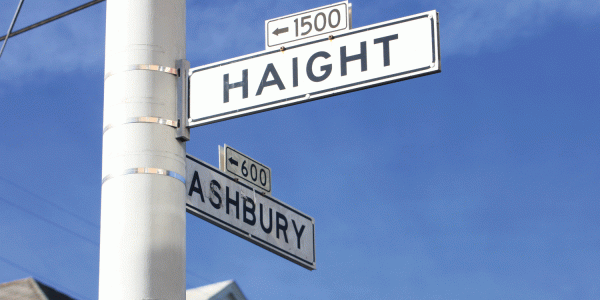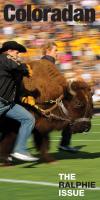 Boulder Beat Column
Boulder Beat Column
The 1967 Summer of Love may not have amounted to much at CU, but the ’67 fall semester was another matter.
Hippie culture began seeping into the student body. Student activism turned more radical. And in the city of Boulder there was a political earthquake.
In October CU’s recently organized Students for a Democratic Society chapter blocked the entrance to the University Placement Office, where the CIA was interviewing job seekers, prompting a near-riot when students who had other interviews scheduled tried to get past. Nine protesters were suspended for a semester.
By the standards of what came later, the demo was pretty tame stuff. But it marked the moment when student activism switched from early ’60s civil rights-style protests to the more militant Vietnam War era-style.
Off campus, the citizens of Boulder voted for a sales tax to buy open space (we called it greenbelts back then), and also to allow booze sales in the city, ending 60 years of local prohibition. The votes profoundly changed Boulder and how CU students would know it.
Today Boulder is completely surrounded by tens of thousands of acres of open space. Without it, Boulder would be a lot more like Aurora, and the CU experience would be much more like that of an urban campus.
Boulder had voted itself dry in 1907, a decade before Prohibition came to the rest of the country. After 1934, 3.2 beer sales were grudgingly allowed.
Between 1933 and 1963, Boulder voters considered six proposals to repeal local prohibition — and rejected all six.
But by 1967 Boulder’s population was exploding. IBM alone brought more than 8,000 new employees and their spouses to town.
The newcomers weren’t much into temperance. So in November ’67 the voters said, in so many words, Happy Days Are Here Again, 9,709 to 3,965.
The City Council wasted no time in bellying up to the bar.
It swiftly annexed the enclaves home to a necklace of liquor stores, restaurants and bars surrounding Boulder, including the Harvest House and the Lamp Post, Boulder’s two best eateries then.
The total value of the property annexed was almost $19 million in 1967, about $138 million today. The Boulderado Hotel obtained a liquor license for The Catacombs, the first upscale restaurant to open downtown in ages, beginning the area's Lazarus-like resurrection.
Today Boulder has more than 150 bars and restaurants and a vibrant food and entertainment scene. If you haven’t been back since 1967, you might not recognize the place.
Except for the soaring, unbuilt mountain backdrop and the breathtaking panoramas of open space sweeping down from Davidson Mesa. That much hasn’t changed.
Photo from 1968 Coloradan yearbook






